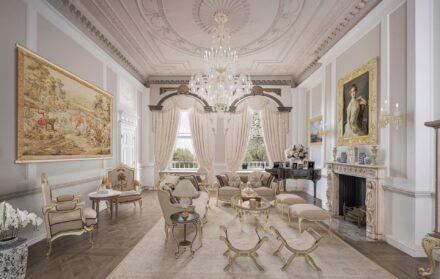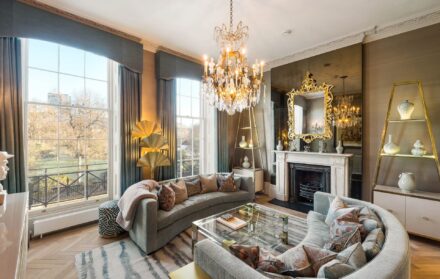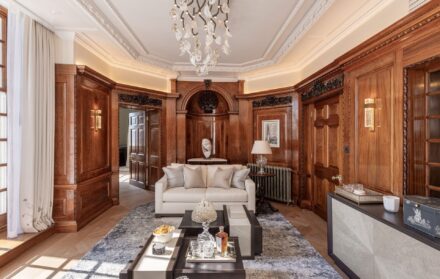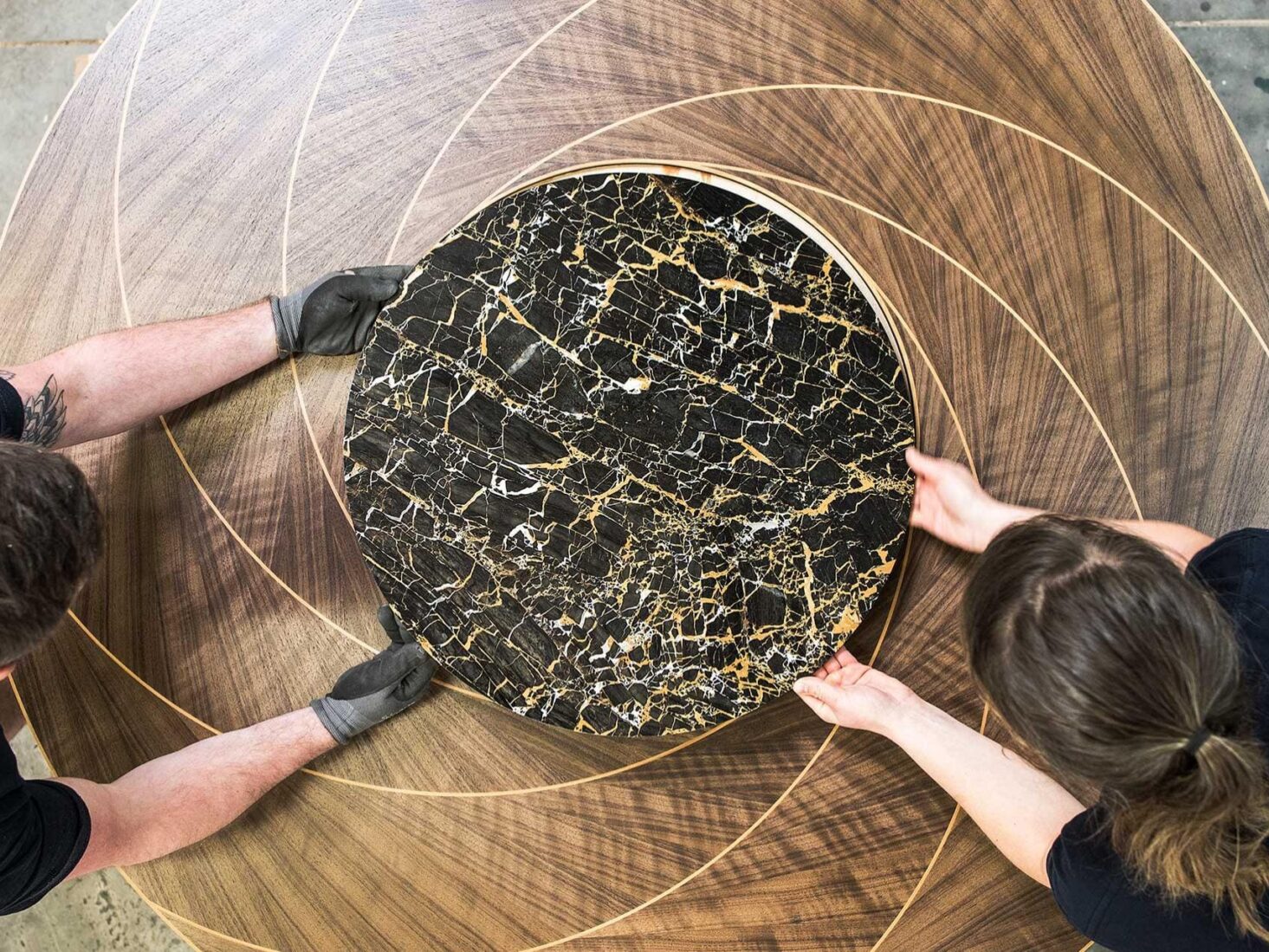
David Linley: The Aristocratic Furniture Maker Modernising Marquetry
“When I first started making furniture, my mother was asked every day by her friends, ‘when is your son going to get a job’?’”
David Linley is on the charm offensive. A late-running lunch has left him 30 minutes behind schedule for our interview, and when he strolls over to his stand at the Masterpiece art fair, he’s met by a team of PRs keen to get the show on the road. “Are we doing it here? Are you the person?” he asks when he spots me amid the chaos, perched on the sofa we’ve been allocated for our interview. “Well, cut out the middle man and let’s meet the person. How are you? I’m so sorry, did you hear about the lunch?”

I’d already been warned that Linley “knows everyone”, and indeed throughout our chat people interrupt to say hello, introduce their friends and ask if they can grab five minutes with the man of the moment. “We’ve just been admiring your furniture David,” one woman crows from across the room. “Buying it would be better,” he replies with a smile.
As the second Earl of Snowdon and 20th in line to the throne, Linley is bound to cause a bit of a buzz, but when I meet him he is almost disappointingly un-royal. Absent are the formalities often awarded to his family members – instead he plonks himself on the sofa next to me and begins flicking through a copy of the magazine, telling me stories about meeting Paul Smith (“He comes into the shop quite a lot”) and pointing out one of his client’s boats in the background of our Monaco fashion shoot.
He’s posh, yes, and looks remarkably like his mother, Princess Margaret – but the comparison ends there. If anything he’s keen to avoid discussing his royal connection (my question about whether he’s seen The Crown is met with a polite but firm “no”), and when he does mention his family it’s done in an off-hand way, as if I don’t know who they are. As his mother used to say, “My children aren’t royal; they just happen to have the Queen as an aunt”.
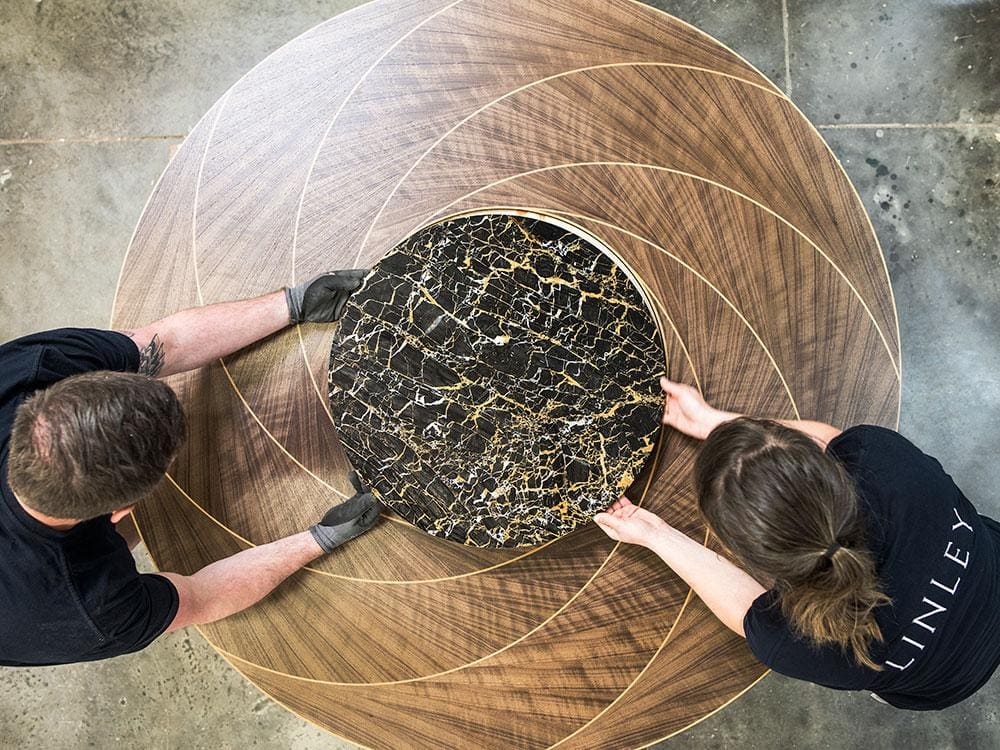
It’s to discuss his eponymous furniture company that we’re meeting at Masterpiece, where Linley and his team present new works of innovative joinery every year. He started making cabinets at the tender age of 20 while living above a chippy in Dorking. His enterprise was so successful that three years later he opened his first shop on the New King’s Road. He now has boutiques in Pimlico, Belgravia and Mayfair, and a concession stand at Harrods.
“When I first started making furniture, my mother was asked every day by her friends, ‘when is your son going to get a job’?’” He laughs. “People don’t tend to think of it as a proper vocation, but I hope we’ve started to change that perception and shown that it’s worthwhile.”
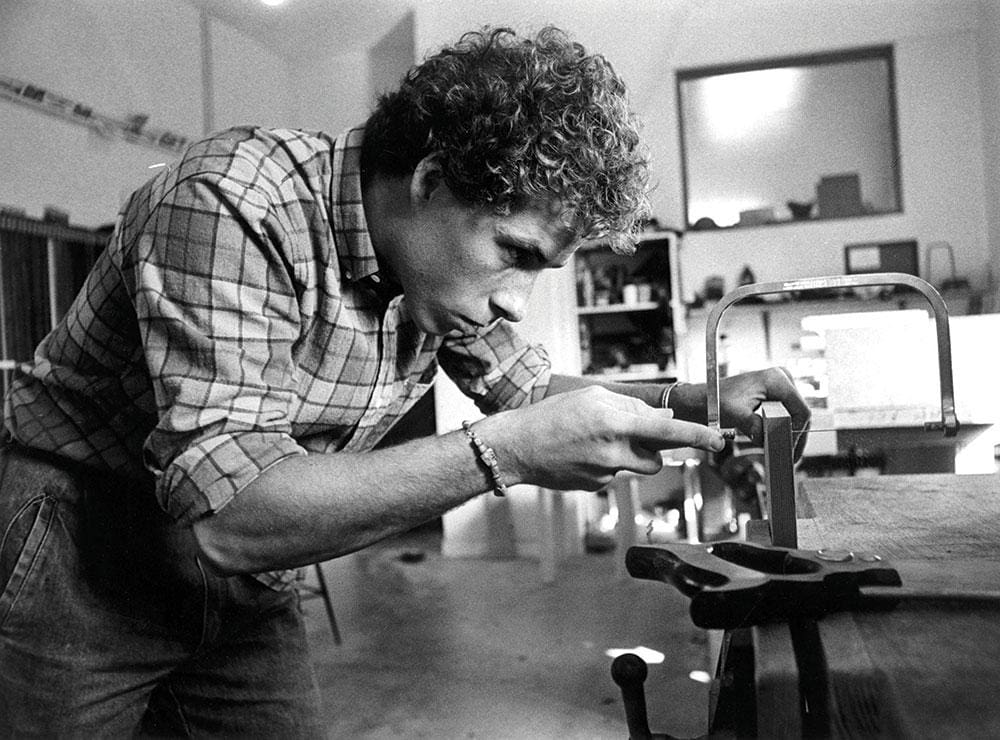
Now his brand’s USP is meticulously crafted furniture, objects and wooden accessories spanning writing desks to domino sets. Along with his team of craftsmen he pioneered something of a marquetry renaissance, taking the 17th-century craft and making it contemporary with veneer screens that depict the London skyline and boxes decorated with miniature works of art.
The majority of Linley’s work comes from bespoke commissions, so the chance to exhibit at Masterpiece happily gives the team creative free reign. This year the focus was on movement, inspired by the fashion of Japanese designer Issey Miyake and the architecture of Frank Lloyd Wright. The result is the Torque dining table, a twisting circle with 66 meticulously veneered layers to give the base a contorted effect. In the centre sits a Portoro marble Lazy Susan – a spinning disc that moves independently from the rest of the structure. Matching Eclipse side tables in decadent gold marble are also part of the new collection, as is the latest globe in a long-standing collaboration with Bellerby & Co of London.

“This is the only opportunity we have to do a pure idea, because most of the time we’re doing something for commission or to sell in the shop,” says Linley. “This is total freedom; it’s dream time.”
His commissioned work doesn’t sound too dull, mind; Linley’s senior designer Lee Deason tells me about a plinth the team made for a customer who wanted to display his wife’s custom-made chastity belt. Another commission for a revolving lacquer screen with a highly detailed Bonsai tree design was made to house a family’s slipper collection. “No client is the same,” Deason laughs.
The designer was the main brain behind the new collection, and while Linley is still very much involved in the direction (the Lazy Susan was his idea), he now approaches the brand from a sales perspective. You won’t find him sanding wood these days.
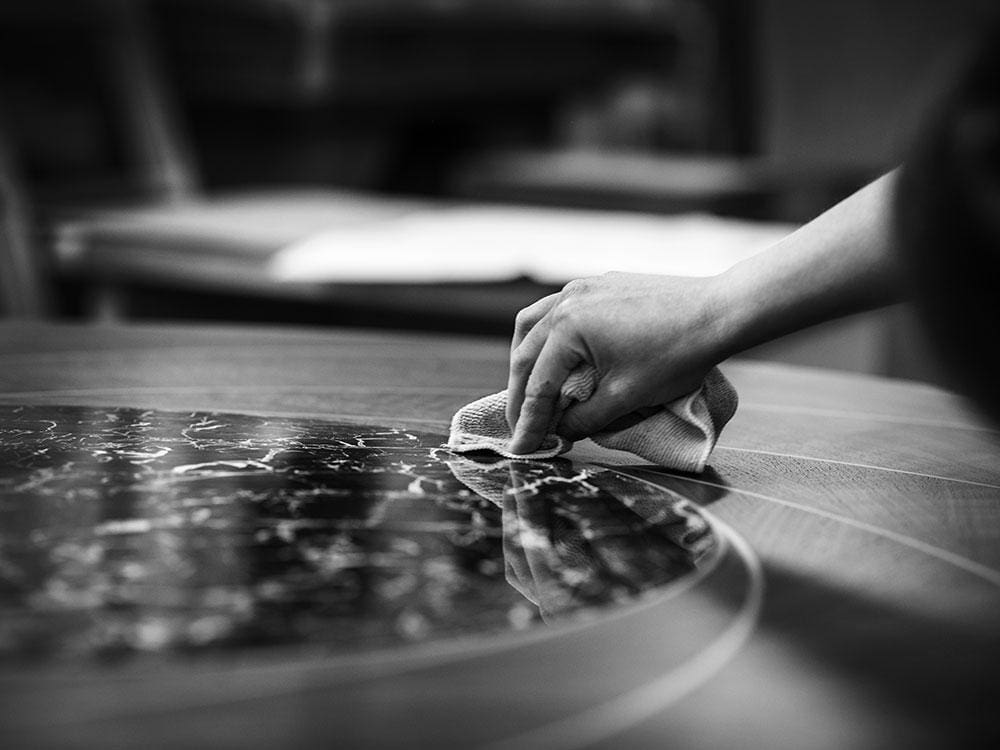
“I stopped working in the workshop in 1984, when I became a shopkeeper. It was a very distinct cut-off,” he explains. “I was trained in carpentry and I do really love doing it, but at the moment the best use of my time is making sales, not making a nuisance.”
His new aim is to elevate people’s perception of craft. His company’s summer school is now in its third year, and the week-long event gives students the chance to learn from Linley’s master craftsmen, in the hope that it inspires them. He has a similar plan for his brand.
“The vibe’s got to be one of creativity and fun. So many people turn up and they’ve all got the same bloody telephone and they all go click, click, click and then walk off. The dialogue is gone,” he says. “Now, our aim is to engage the young, engage the crafts and elevate them to a point in society where everybody’s proud of what they do. We want to make Linley a centre of excellence – and I think that’s something we are perfectly capable of doing.”





